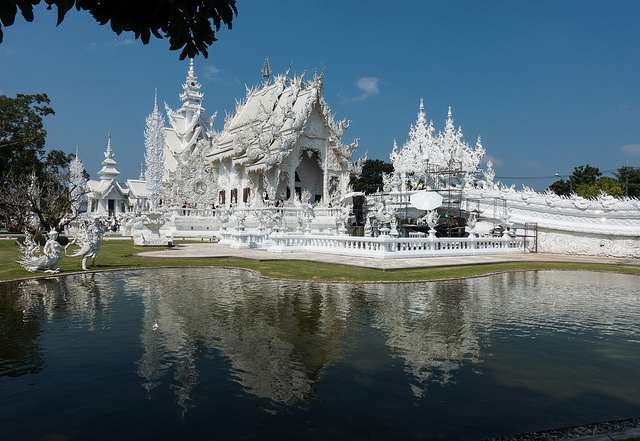“Architecture is… the substance from which country, culture, city, and identity are formed.” –Philip Jodidio
Travel is one of the few things you can buy that will make you richer. One of the greatest joys of traveling is immersing yourself in the local culture. Architectural landmarks are infused with a destination’s flair, withstanding the test of time to teach about the past and look toward the future. The world is filled with iconic architectural landmarks that are worth the while to explore. Here are a few to add to your travel bucket list as you plan future trips in your private jet.
Dancing House | Prague, Czech Republic
A Nationale-Nederlanden building on the Rašínovo nábřeží, the Frank Gehry-designed Dancing House stands out among Prague’s traditional Art Nouveau, Gothic and Baroque architecture. The building is on a site once destroyed by a bombing in 1945. In 1992, Gehry and V. Milunić elaborated on the idea of constructing a building with two parts that symbolize Czechoslovakia’s transition from a communist regime to a parliamentary democracy. The deconstructivist, or new-baroque, building has 99 concrete panels with different shapes and dimensions. The top of the Dancing House features a twisted metal structure some call Medusa.
Machu Picchu | Urubamba Province, Peru
The site of a 15th-century citadel, Machu Picchu hugs a mountain ridge nearly 8,000 feet above sea level. Archaeologists believe the Inca citadel was built for the emperor Pachacuit. Nearly a century after it was built, around the time of the Spanish Conquest, those who inhabited the area abandoned the estate. Interestingly, Machu Picchu remained unknown to the colonizing Spanish and outside world until 1911. Archaeologists continue restoring and reconstructing the site to give visitors a better idea of how the citadel looked.
Al-Khazneh | Petra, Jordan
Famous for its rock-cut façade, Al-Khazneh, or The Treasury, is one of the most elaborate ancient temples in Petra. Builders carved the sandstone rock face during the first century AD, during the reign of Aretas IV Philopatris, so it could serve as a crypt and mausoleum. The site got its nickname, Treasury, from legends of bandits hiding their loot within an urn. Another legend tells of the site being a treasure bunker for an Egyptian pharaoh. While many of the architectural details have eroded, there is still much to see. When visiting the famous temple, you must walk through the Siq, a narrow gorge, for a kilometer before it comes into view.
Wat Rong Khun (White Temple) | Chiang Rai, Thailand
Privately-owned art exhibit, Wat Rong Khun, or White Temple, is famous for its unconventional, contemporary Buddhist-temple-style architecture. After the original temple sat in a state of disrepair for too long, artist Chalermchai Kositpipat took it upon himself to rebuild it using his own funds. When completed in 2070, the compound will have nine buildings, including a meditation hall, hall of relics, and living quarters for monks. Ubosot, the temple’s main building, has mirror fragments embedded into its white exterior that make the architecture sparkle in the sun. Each building at Wat Rong Khun has distinct symbolism, even the restroom.
Potala Palace | Lhasa, Tibet, China
The residence of the Dalai Lama until the 14th spiritual leader fled in 1959, Potala Palace is nestled on the side of Marpo Ri, or Red Mountain, 12,100 feet above sea level. Today, it’s a museum. The palace was constructed in 1645 and has vast inward-sloping walls, rows windows, flat roofs, and copper poured into the foundation to protect it against earthquakes. Gently ascending staircases lead to the summit where the palace sits. Within the group of buildings is the distinguishable crimson-colored red palace, which contains shrines, decorative paintings, carvings, halls, and chapels.

